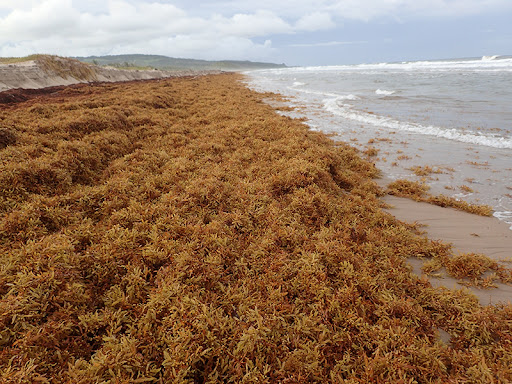Availability of wood and other sources of solid carbon-bearing materials
The availability of wood was estimated by Ning Zeng and co-workers11,30,31 in support of an innovative concept to bury logs as a means of storing carbon. Zeng and others31 describe using a calibrated global vegetation and climate model to estimate the maximum potential available wood, and then they adjust that estimate downward to account for the need for other land use, protected areas and the need to support the current wood products industry. These adjustments are important because they account for the need to produce wood at a rate that is sustainable. This gives a rate of 0.5 GtCO2-eq/yr in the U.S. and a global rate of 9.7 GtCO2-eq/yr. Zeng and others31 describe another method based on the current rate of timber harvest that gives a lower global estimate, approximately 3.7 GtCO2-eq/yr. This allows them to bound the sustainable global rate of biomass between 3.7 GtCO2-eq/yr and 9.7 GtCO2-eq/yr.
Biomass is widely available in the U.S. (Table 1), according to a detailed evaluation by the U.S. Department of Energy32 that includes an assessment of sustainability.

The rate that wood can be generated without causing negative effects on the environment is particularly high in the southeastern and northwestern U.S., and rates of biomass production as crop waste are high in the Midwest. The sustainable rates of biomass production generally increase with time because of evolving land management practices32. The baseline analysis32 indicates a rate of available biomass that increases from 0.62 GtCO2-eq/yr in 2017 (when the study was conducted) to 1.5 GtCO2-eq/yr in 2040. For comparison, Zeng and others31 estimated 0.5 GtCO2-eq/yr in the U.S., which is approximately the same as the results in U.S. DOE32.
These results suggest that implementing sCGS at a 0.1 GtCO2-eq/yr scale today would not be limited by the sustainable availability of biomass in the U.S. Obtaining the biomass needed to scale up to 1.0 GtCO2e/yr would be feasible in the coming decade using U.S. resources, and it could occur earlier if international sources of wood are used.
Alternative carbon-bearing materials
A wide range of carbon-bearing materials are available, including crop and forest residues, and brush (U.S. DOE, 2016), waste plastic (U.S. EPA, 2021), aquatic plants (Hussner et al., 2017), and processed materials such as biochar or coke breeze. Many of these materials are a nuisance and their presence can create significant problems. Woody brush in the understory of forests can increase risks of catastrophic fires (Nunamaker et al., 2007; Royo & Carson, 2006). Plastics use valuable space in landfills, contaminate waterways and the ocean, and give rise to micro-plastic contamination that has been observed throughout ecosystems (Crawford & Quinn Brian, 2017). Blooms of algae or seaweed (e.g. Sargassum) create hypoxia, release toxins, and foul waterways and beaches, and invasive aquatic plants can damage aquatic ecosystems (Ananthi et al., 2021; Hussner et al., 2017).
The materials outlined above can be comminuted and injected as a slurry, much like wood was used in the experiment described here. Widespread implementation of the proposed process would create incentive to collect carbon-bearing materials that would otherwise cause a nuisance or problem in the environment.

